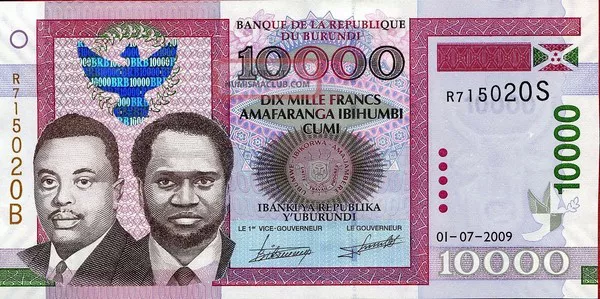The Burundian franc (BIF) serves as the official currency of the East African nation of Burundi. In this comprehensive exploration, we delve into the multifaceted aspects of the Burundian franc, examining its historical background, current circulation, and the diverse range of entities and individuals involved in its usage. From government transactions to everyday commerce, this article aims to provide an in-depth understanding of who uses the Burundian franc and the economic forces shaping its role.
Historical Context:
To comprehend the present-day usage of the Burundian franc, it is crucial to explore its historical context. The currency’s origins trace back to the early years of Burundi’s independence, where it was introduced to replace the Belgian Congo franc. Over the years, the Burundian franc has undergone various changes and evolutions, reflecting the economic shifts and challenges faced by the nation.
Governmental Usage:
One primary sector utilizing the Burundian franc is the government of Burundi. The currency plays a pivotal role in public finances, being employed for government expenditures, public sector salaries, and other fiscal transactions. Understanding the government’s reliance on the Burundian franc provides insights into the currency’s stability and its significance in sustaining economic activities on a national level.
Commerce and Business Transactions:
The Burundian franc is the linchpin of commercial activities within Burundi. From local markets to international trade, businesses across diverse sectors conduct transactions in Burundian francs. Examining the intricacies of these business dealings sheds light on the currency’s liquidity, exchange rates, and its impact on the country’s economic growth.
Financial Institutions and Banking:
Financial institutions, including banks and other monetary entities, play a crucial role in the circulation and utilization of the Burundian franc. Banking operations, loans, and savings are denominated in the local currency, influencing the country’s monetary policy and financial stability. This section explores the symbiotic relationship between financial institutions and the Burundian franc, emphasizing its role in shaping the nation’s economic landscape.
Foreign Aid and International Transactions:
Burundi, like many developing nations, receives foreign aid and engages in international transactions. The dynamics of foreign aid, grants, and loans are intricately linked to the Burundian franc, impacting the nation’s economic standing and fiscal policies. By dissecting the role of the currency in international financial interactions, we gain insights into the global perception of the Burundian economy.
Daily Transactions and Consumer Usage:
On a grassroots level, the Burundian franc is the currency of choice for everyday transactions among the general population. From buying goods and services to paying for utilities, understanding the preferences and challenges faced by consumers using the Burundian franc provides a holistic view of the currency’s role in shaping the daily lives of Burundians.
Challenges and Future Prospects:
No exploration of a currency is complete without acknowledging the challenges it faces and contemplating its future. The Burundian franc is not exempt from economic uncertainties and global shifts. In this section, we examine the challenges, including inflationary pressures and external economic influences, and discuss potential strategies and innovations that could shape the trajectory of the Burundian franc in the years to come.
See Also: Burundi Franc (BIF) Currency: History, Symbol, Codes & Denominations
Conclusion:
In conclusion, the Burundian franc serves as a vital instrument in the economic orchestra of Burundi. From governmental transactions to grassroots commerce, the currency weaves through the diverse fabric of the nation’s financial landscape. By comprehensively exploring the various entities and individuals involved in its usage, we gain a nuanced understanding of the Burundian franc’s significance, challenges, and potential for the future. This in-depth analysis aims to contribute to a broader conversation on the economic dynamics of emerging nations and their currencies.


